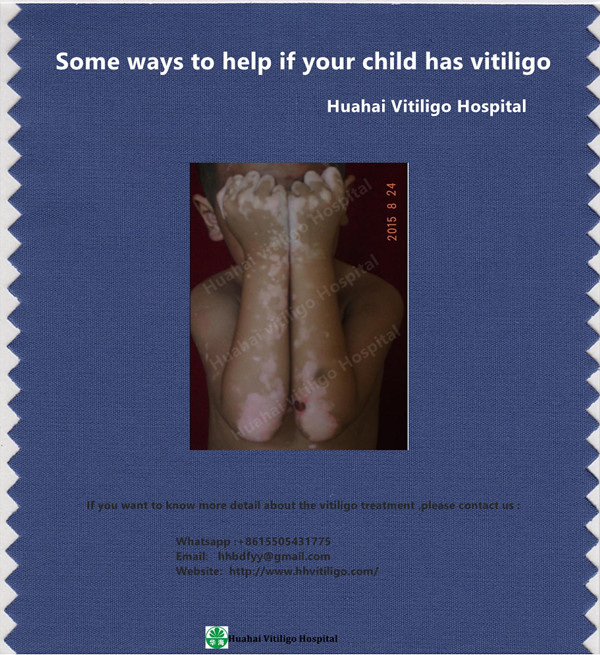
Here are ways to help if your child has vitiligo:
Sunscreen. One of the most important things your child can do is wear sunscreen every day to protect against skin cancer. And because vitiligo spots can't tan (they have no melanin), they may burn and scar. Getting a tan on the rest of the body will only highlight white patches even more, especially if a child has light skin.
Cosmetics. Different kinds of over-the-counter concealers are available. Ask your doctor for recommendations and try different brands until you find the one that works best for your child.
Corticosteroid creams. Corticosteroids are a type of medication which, when applied to white patches very early in the disease, may help to "repigment" the skin. They reduce the inflammation that causes a loss of pigment so that pigmented cells can return to the skin. Some non-steroidal creams also produce a similar effect.
Photochemotherapy with ultraviolet A (also known as PUVA). PUVA has two steps: first, a medicine called psoralen is either applied to the white patches of skin or taken orally; then, the skin is exposed to ultraviolet light, sometimes from the sun but usually from an artificial source, like a UVA lamp. This turns the affected skin pink, which in time tends to fade to a more natural (often slightly darker) color. There are side effects, which may include severe sunburn and skin blistering. Other side effects may be more serious, so talk to your doctor about the risks involved.
Narrow-band ultraviolet B (UVB) therapy. This treatment is more widely used than PUVA. It's similar to PUVA, except that the ultraviolet light used is UVB instead of UVA. Also, no psoralen is required beforehand, which eliminates some of the side effects.
Researchers are also looking into a new procedure called a melanocyte transplant. It works by removing a sample of normally pigmented skin and using it to grow new melanocytes in the lab. These can then be transplanted back into the depigmented skin to return some of the missing color.
When deciding which, if any, treatment to try, be wary of quick-fix "miracle" remedies you might see advertised. If it seems too good to be true, it probably is. Always work with your child's doctor to help you decide what's best for your son or daughter.
Dealing With the Emotional Impact
If your child has vitiligo, you know that even though it isn't dangerous to his or her physical health, it can still be a big deal. Any condition that makes kids look different from their peers can be emotionally tough, especially during the preteen and teen years when everyone's trying so hard to fit in.
Some kids are naturally more resilient and do just fine against these challenges. But others need a bit more help. As a parent you can do a lot to arm your child with confidence and self-esteem. Here are a few tips:
Don't focus on the vitiligo or put pressure on your child to cover it up. He or she needs to know your love and acceptance are unconditional.
Remind your child of all the things at which he or she excels — and how they have nothing to do with skin color.
Teach your child to be comfortable explaining what vitiligo is — and isn't — to other kids. Once the mystery is taken away, most kids will stop staring and asking questions.
Encourage your child to say yes to play dates, pool parties, trips, and any other experiences he or she might be tempted to pass on because of the vitiligo.
Urge your son or daughter to volunteer or get involved in the community. Giving back makes kids feel powerful.
Finally, get emotional support if your child needs it — especially if you see any signs of withdrawal, depression, or anxiety. Counselors, therapists, and vitiligo support groups can help.
If you want to know more ,please contact us by the following way:
Whatsapp :+8615505431775
Email: hhbdfyy@gmail.com
Website: http://www.hhvitiligo.com/